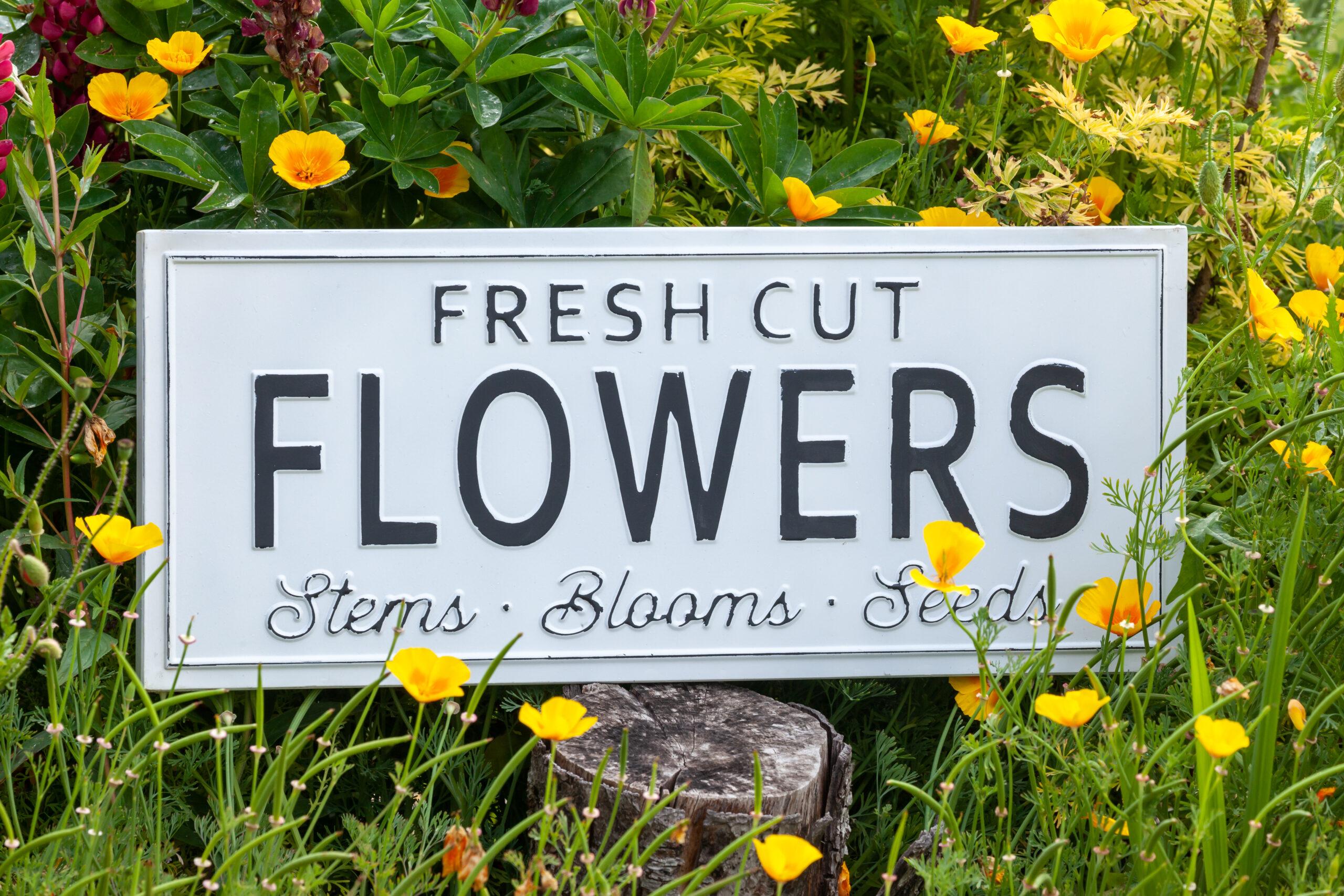If you love the idea of bringing the beauty of outdoor gardens indoors, then you may already grow some of the most popular plants that will make great cut flower arrangements. These truly “perennial” favorites might include peonies, coneflowers, iris, lavender, or different types of daisies. But your fondness for cut flowers doesn’t have to stop with the tried and true varieties. I asked some of the team in Tagawa’s Perennial department to name a few less obvious flowers that would play well in arrangements. Here are their thoughts.
Salvia
Salvia (a.k.a. sage) is a huge family of plants. People familiar with salvias know them to be hard-working and reliable but may not realize that they can be great additions to arrangements or bouquets. Now is a good time to give them that new job!
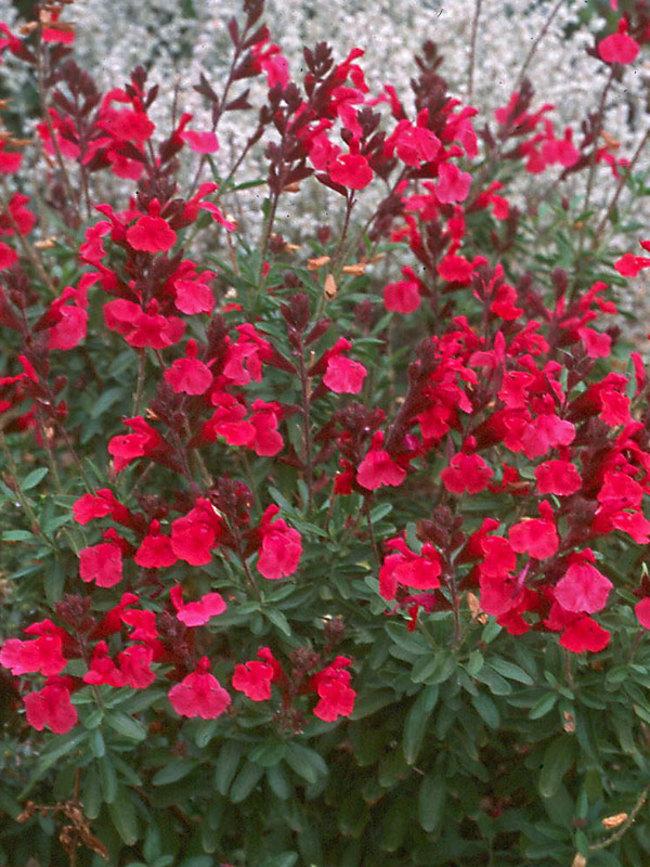
“Wild Thing” sage (above) and its very close cousin “Furman’s Red” sage both have tall vertical stems that add so much dimension to cut arrangements. Like many other flowers in the salvia family, the blossoms are fairly small but make up for their size with dense color. You’ll find different varieties of perennial salvia in blue and purple, along with magenta and several shades of red.
Coreopsis
Coreopsis are among my favorite garden flowers. They’re bright and cheery, and their blossoms truly “pop,” close up or from a distance.
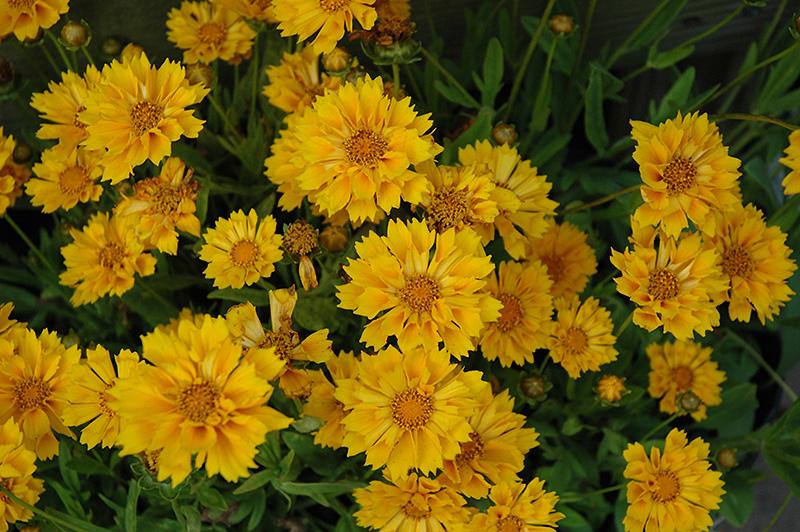
I grow “Jethro Tull” coreopsis in several spots in my garden. The daisy-like petals have so much going on! They’re rolled and fringed and sassy, and just make me smile.
But Jethro Tull isn’t the only game in town when it comes to coreopsis. You’ll find blossoms that are bigger, smaller, or more lemony-yellow, and others with dark centers surrounded by an array of petals doing their best to imitate the sun. No matter which variety you choose, you’ll find they have long sturdy stems and happy faces, perfect for brightening up a mixed arrangement.
Liatris
For a cut flower that provides an almost fuzzy-looking vertical element, liatris in a keeper! It’s most common varieties are a soft lavender color, with tiny flowers completely covering the upper portions of the tall stems.
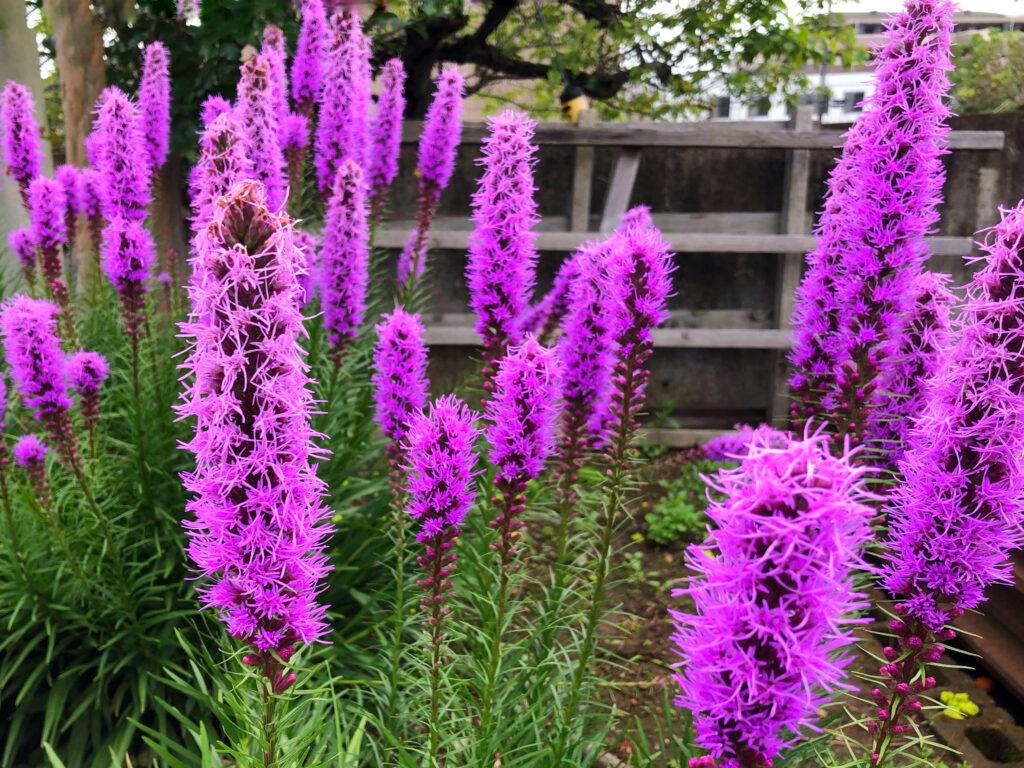
Liatris is often planted in challenging locations like roadway medians, which tells you it’s one tough plant. But tough in the garden can easily translate to elegant in a vase of cut flowers. It’s well worth trying!
Dianthus
Carnations are in the dianthus family, but so many dianthus are not carnations – and most of them make excellent cut flowers. I have to admit my clear favorite: it’s ‘First Love’ dianthus all the way!
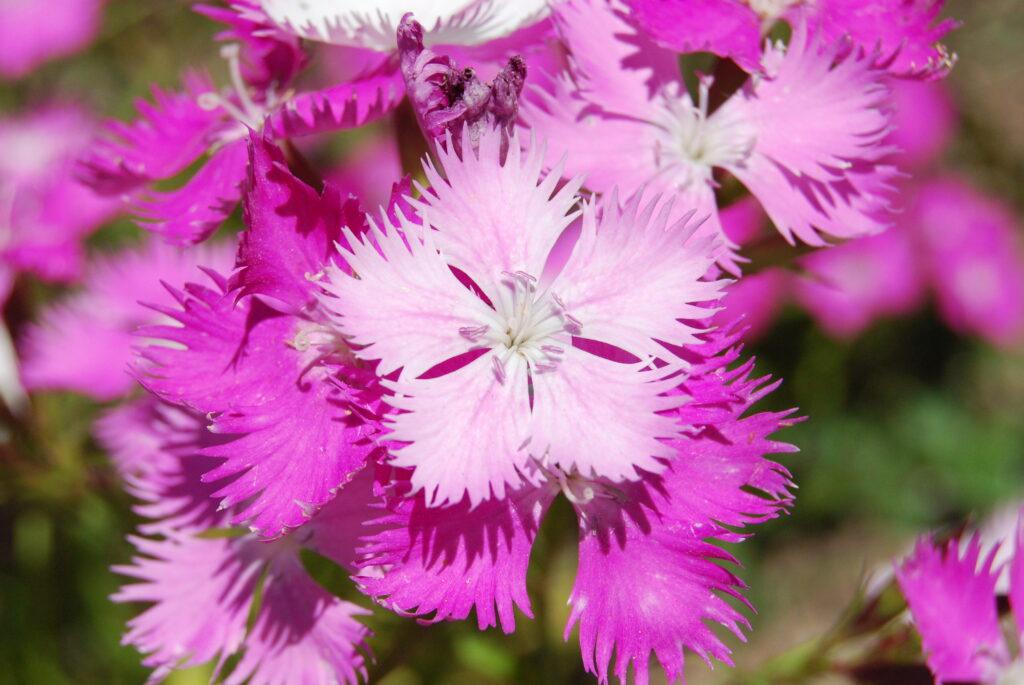
I love ‘First Love’ because it offers such a terrific surprise when it blooms. The blossoms of ‘First Love’ open white, then steadily turn to pink, finishing up a beautiful bold magenta. Just look at those fringed petals! That’s a lot of bang for the cut-flower buck!
Like all dianthus (including so many annual varieties), ‘First Love’ carries the rich, unmistakable fragrance of clove which can be another asset for using them indoors. The plants’ blue-green foliage also makes for a perfect accent in an arrangement.
Veronica
I tend to think that upright veronica (a.k.a. speedwell) belongs in just about every garden. The tiny flowers displayed along very straight stems make the whole plant look so robust and healthy!
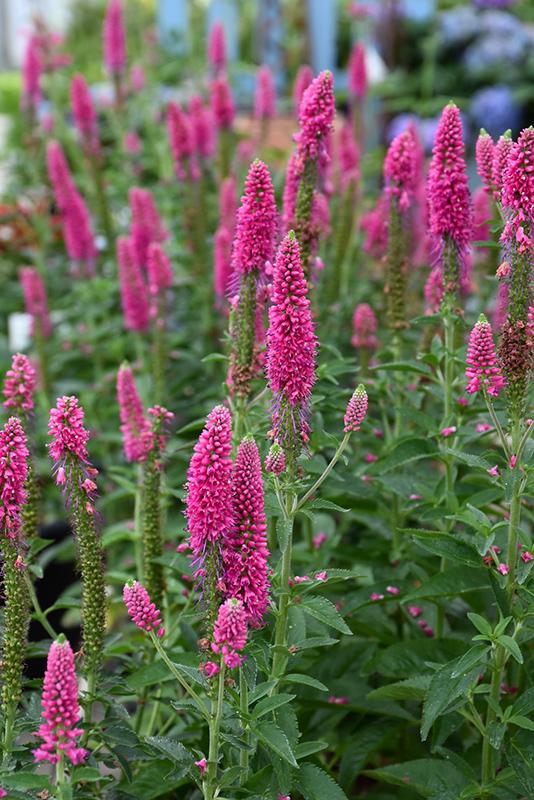
Veronica comes is deep, dense colors including pink, purple, and various shades of blue. I’ve grown it in my garden beds for years and can’t think of any time that it hasn’t been a standout! As a cut flower, it’s especially fun to watch the tiny blossoms open steadily, moving upward on the stem. Veronica just can’t help but make a statement!
Goldenrod
If you’re looking for a bright, showy plant for your cut flower arrangements, add goldenrod to your garden! It’s big, bold, and feathery and quite wonderful when it blooms in late summer.
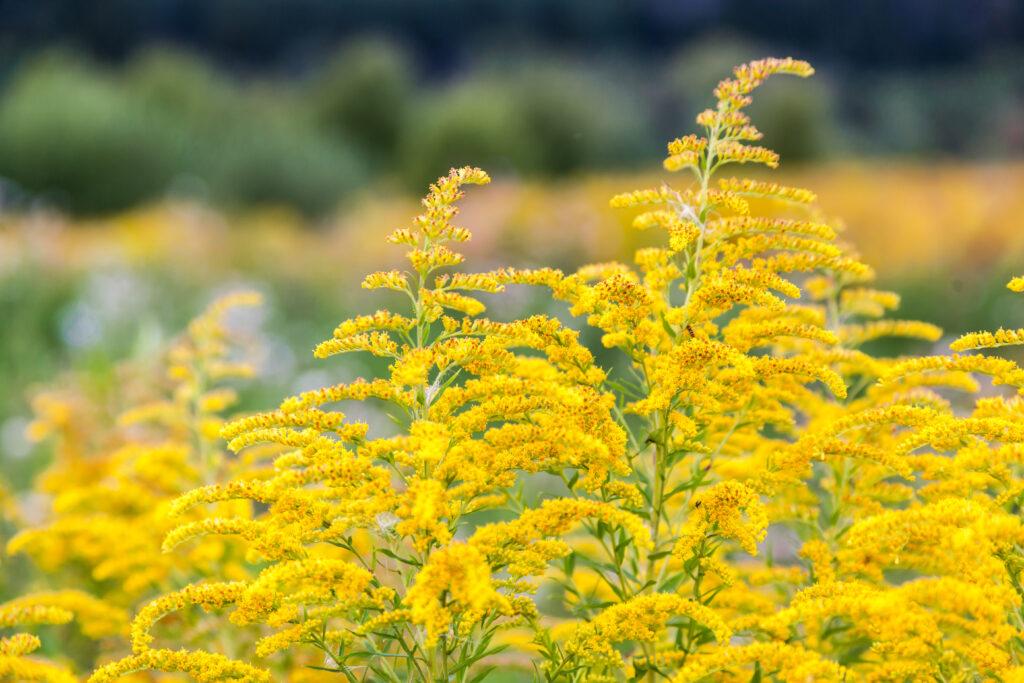
The arching flower spikes definitely command center stage in a bouquet. Goldenrod reaches its full glory in my garden by early August, but whether its decorating a landscape or filling an arrangement, it’s well worth the wait.
It’s unfortunate that many people confuse the beautiful flowers of goldenrod with the eye-watering, sneeze-inducing flowers of ragweed. The confusion centers on the pollen. Ragweed is pollinated by the wind and releases millions of pollen spores to create new plants. Goldenrod is pollinated by insects and other pollinators, so its pollen isn’t released en masse into the air. I’ve grown it for five years, and it hasn’t triggered a single sneeze yet!
Don’t Forget Beautiful Grasses!
So many gardeners are coming around to the idea that their flower beds aren’t complete unless they include some – or several – ornamental grasses. What these lovely plants do for our landscapes, they can also do for cut flower arrangements. One of the best candidates is ‘Karley Rose’ fountain grass.
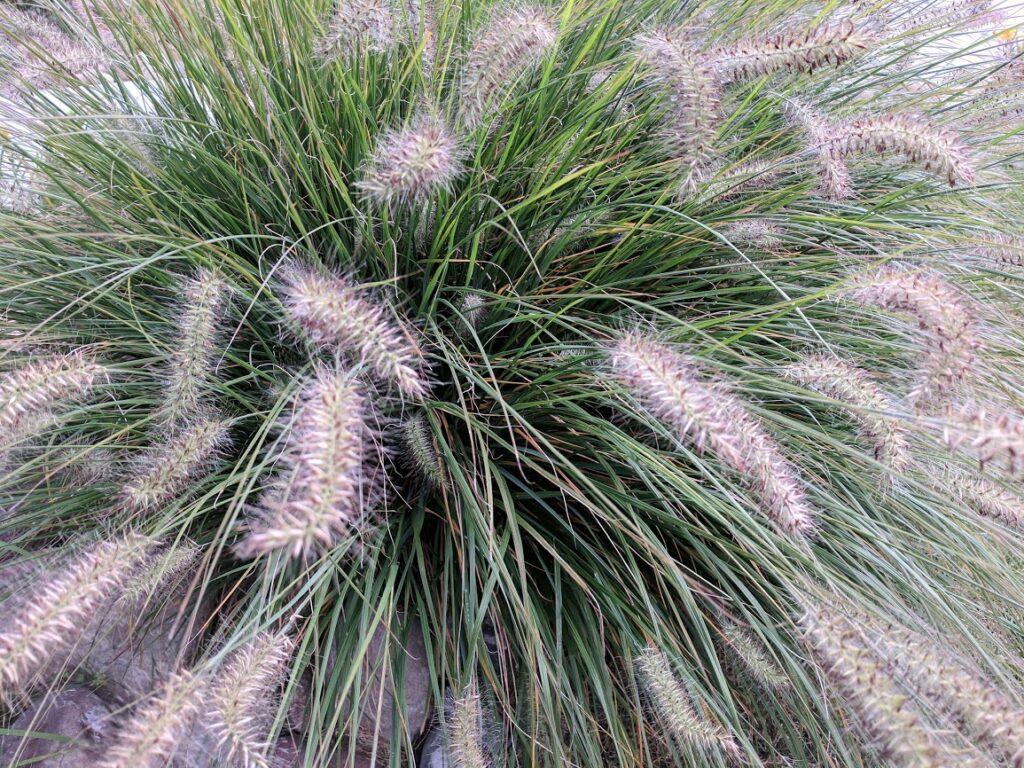
I’ve grown Karley Rose for several years, and it’s never failed me. Even after a challenging winter, when the remnants of last’s year’s Karley Rose look like they’re done for, up it sprouts! The pale pink seed heads are already forming in my garden this year. Added in tiny bundles of just a few stems here and there, it could take a mixed flower arrangement from pretty to pretty darned terrific!
Tips for Gathering Cut Flowers
As you harvest flowers from your own garden, here are some basics to keep in mind:
~ Always cut flowers in cool morning temperatures.
~ Use very sharp scissors, making an angled cut just above the next set of leaves.
~ Remove any lower foliage that will fall below the waterline and immediately immerse those flower stems into a bucket of water.
~ Make a fresh cut just before inserting the stems into a finished arrangement.
~ Don’t expose the arrangement to direct sunshine.
As always, the friendly and experienced staff at Tagawa will be happy to guide you toward plants that will make a great showing both in your landscape and in your cut flower arrangements.
